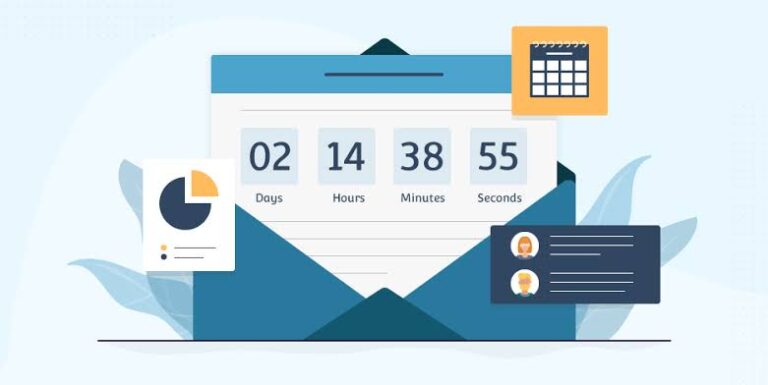Getting Started with OpenCart: A Beginner’s Guide
Introduction
In the ever-expanding world of e-commerce, choosing the right platform for your online store is crucial. OpenCart has become famous for many entrepreneurs and small businesses due to its user-friendly interface, extensive features, and flexibility. This open-source e-commerce solution provides a robust foundation for building and managing your online store, whether selling physical products, digital goods, or services.
Before we dive into setting up and managing an OpenCart store, it’s essential to consider your hosting options. While OpenCart can be installed on various web hosting platforms, opting for managed OpenCart hosting can significantly simplify your e-commerce journey. Managed hosting providers offer specialized services tailored to OpenCart’s requirements, including:
– Pre-installed OpenCart software
– Automatic updates and security patches
– Optimized server configurations for better performance
– Dedicated technical support for OpenCart-related issues
– Regular backups and easy restoration options
Now, let’s explore the process of starting with OpenCart and building your online store.
Installing OpenCart
If you’ve chosen a managed OpenCart hosting solution, the installation process may already be done for you. However, if you’re installing OpenCart manually, here are the basic steps:
1. Download the latest version of OpenCart from the official website.
2. Upload the files to your web server.
3. Create a MySQL database for your store.
4. Run the OpenCart installation script by accessing your domain in a web browser.
5. Follow the on-screen instructions to complete the installation.
During installation, you’ll be asked to provide database details, admin credentials, and other essential information about your store. Once the installation is complete, you’ll have access to both the front end of your store and the admin panel.
Setting Up Your Store
With OpenCart installed, it’s time to configure your store settings. Log in to your admin panel and navigate to the System > Settings section. Here are some key areas to focus on:
– General: Set your store name, owner, address, and email.
– Local: Configure your country, language, currency, and time zone.
– Option: Adjust settings for products, taxes, and account options.
– Image: Set image sizes for products and categories.
– Mail: Configure your email settings for order notifications and customer communications.
– Server: Fine-tune server and security settings.
Take your time going through each section and customizing the settings according to your business needs. Remember, many of these settings can be adjusted later as your store grows and evolves.
Choosing and Customizing Themes
The visual appeal of your online store plays a crucial role in attracting and retaining customers. OpenCart offers free and paid themes to help you create a professional-looking e-commerce website. To choose a theme:
1. Go to Extensions > Themes in your admin panel.
2. Browse the OpenCart Marketplace for themes that match your brand and product offerings.
3. Install and activate your chosen theme.
Once you’ve selected a theme, you can customize it to align with your brand identity. Most themes offer options to adjust colors, fonts, layouts, and other visual elements. If you’re comfortable with HTML and CSS, you can make more advanced customizations by editing the theme files directly.
Adding Products and Categories
With your store’s foundation in place, it’s time to add products. OpenCart provides a straightforward process for managing your product catalog:
1. Go to Catalog > Categories to create product categories and subcategories.
2. Navigate to Catalog > Products to add new products.
3. provide details such as each product’s name, description, price, images, and stock levels.
4. Assign products to appropriate categories and set up any variants or options.
When adding products, consider using high-quality images and writing compelling product descriptions to enhance your store’s appeal and improve search engine visibility.
Managing Orders and Customers
As your OpenCart store starts receiving orders, efficient order management becomes crucial. The admin panel provides tools to help you process orders and manage customer information:
– Sales > Orders: View and process incoming orders, update order statuses, and generate invoices.
– Customers > Customers: Manage customer accounts, view order history, and handle customer groups.
– Marketing > Marketing: Set up email campaigns, manage affiliates, and track marketing effectiveness.
Implementing a streamlined order fulfillment process and providing excellent customer service are critical to a successful e-commerce business.
Optimizing Your OpenCart Store
To ensure your OpenCart store performs well and provides a smooth shopping experience, consider these optimization techniques:
– Enable caching: Use OpenCart’s built-in caching options to improve page load times.
– Optimize images: Compress product images to reduce file sizes without sacrificing quality.
– Implement SSL: Secure your store with an SSL certificate to protect customer data and boost trust.
– Use a Content Delivery Network (CDN): Distribute your static content across multiple servers to improve global access speeds.
– Regular maintenance: Keep your OpenCart installation, themes, and extensions up to date.
Many managed OpenCart hosting providers offer additional optimization features, such as server-side caching and content delivery networks, to enhance your store’s performance.
Essential Tips for Beginners
As you embark on your OpenCart journey, keep these tips in mind to set yourself up for success:
1. Start with minimal extensions: While OpenCart’s extensibility is a strength, avoid overloading your store with unnecessary plugins.
2. Focus on mobile responsiveness: Ensure your chosen theme looks great on mobile devices, as a significant portion of e-commerce traffic comes from smartphones and tablets.
3. Implement a solid SEO strategy: Utilize OpenCart’s SEO features, such as custom URLs and meta tags, to improve your store’s search engine visibility.
4. Set up analytics: Integrate tools like Google Analytics to track visitor behavior and store performance.
5. Plan for scalability: Choose a hosting plan to accommodate your store’s growth and consider using a content delivery network for improved global performance.
6. Prioritize security: Regularly update your OpenCart installation, use strong passwords, and implement additional security measures to protect your store and customer data.
7. Offer multiple payment and shipping options: Provide various payment gateways and shipping methods to cater to different customer preferences.
8. Create compelling content: Use your store’s blog feature to publish engaging content that attracts potential customers and improves SEO.
9. Build an email list: Implement email marketing strategies to keep customers informed about new products, promotions, and store updates.
10. Test thoroughly: Before launching your store, conduct comprehensive testing to ensure all features work correctly across different devices and browsers.
Conclusion
Getting started with OpenCart can be an exciting and rewarding experience for aspiring e-commerce entrepreneurs. By following this beginner’s guide and leveraging the benefits of managed OpenCart hosting, you can create a robust online store that serves as a solid foundation for your business growth.
Remember that building a successful e-commerce website is an ongoing process. Monitor your store’s performance, gather customer feedback, and stay informed about the latest e-commerce trends and OpenCart updates. Your OpenCart store can become a thriving online business with dedication and the right strategies.
As you progress in your e-commerce journey, don’t hesitate to explore advanced OpenCart features and third-party integrations that can help streamline your operations and enhance the customer experience. Whether selling handmade crafts and digital products or running a full-scale retail operation, OpenCart provides the flexibility and scalability to support your business goals.
By combining OpenCart’s power with effective marketing strategies, excellent customer service, and a commitment to continuous improvement, you’ll be well-positioned to succeed in the competitive world of online retail.
Stay in touch to get more updates & news on Next Weblog!






